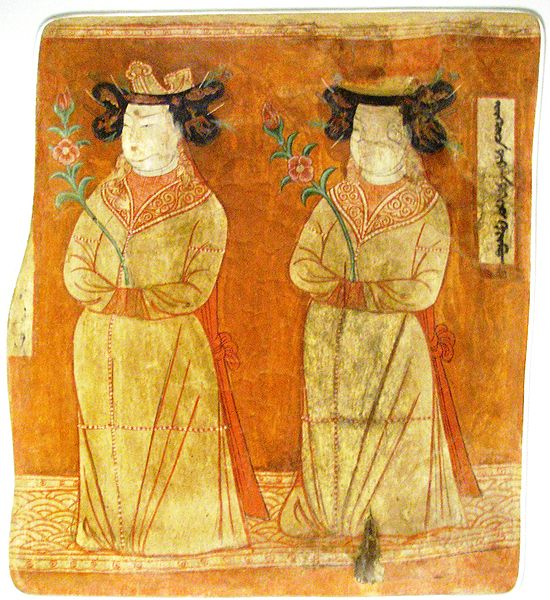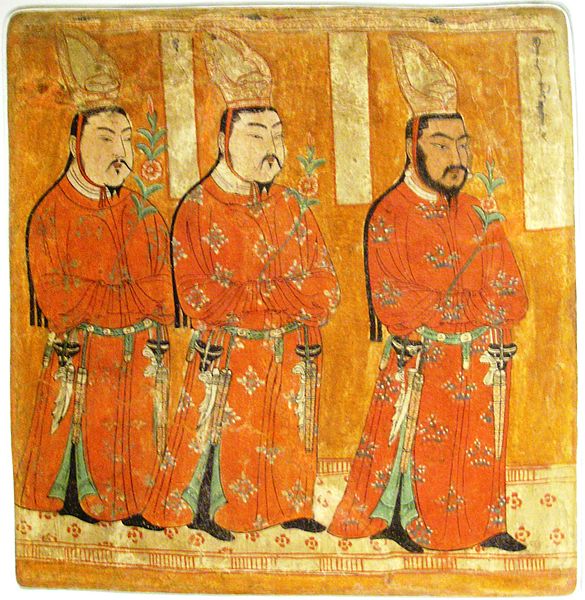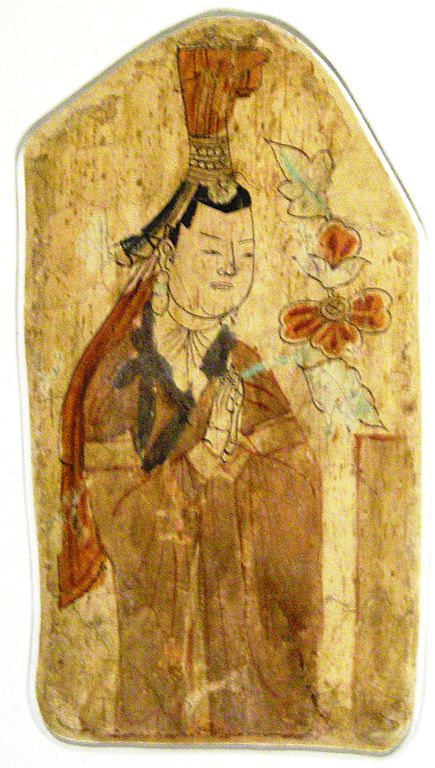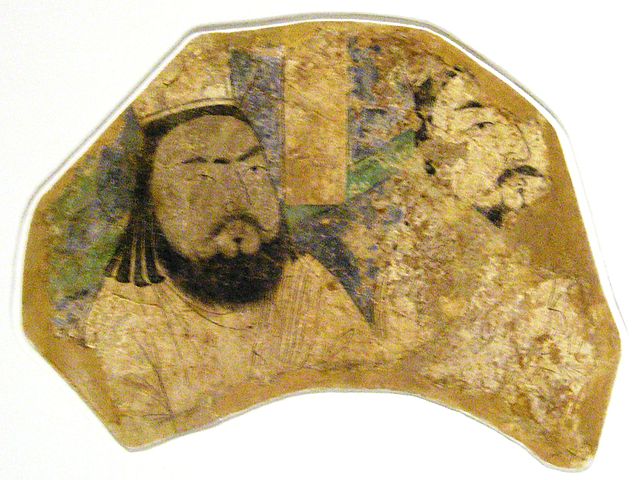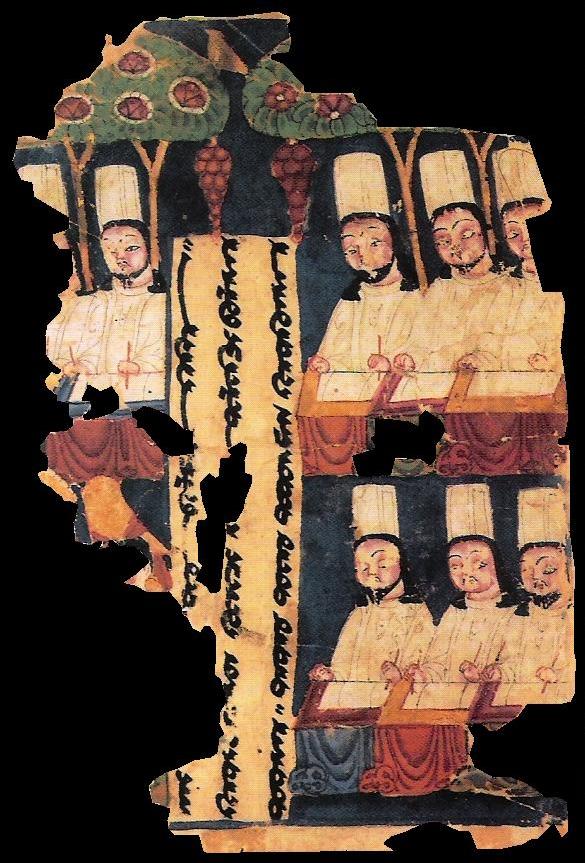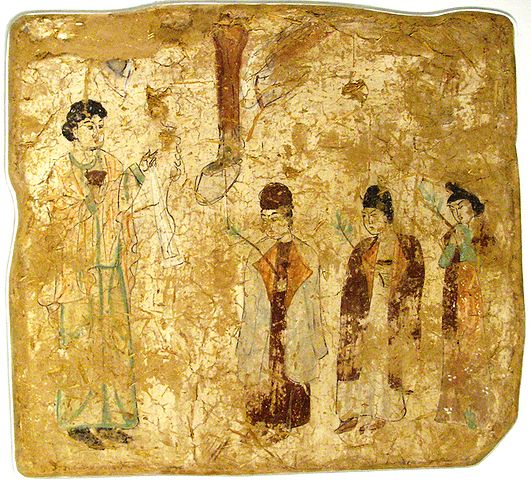
| QOCHO
Qocho Kingdom Qocho Kingdom
843 - 1132
Status :
Sovereign
state (843 - 1132)
Capital : Gaochang, Beshbalik
Common languages : Tocharian, Middle Chinese, Sogdian, and later Old Uyghur
Religion : Manichaeism, Buddhism, Nestorianism (Church of the East)
Government : Monarchy
• Established : 843
• Disestablished : 1132
Preceded by
Uyghur Khaganate
Tibetan Empire
Succeeded by
Western Liao
Chagatai Khanate
Today part of : China, Kazakhstan and Kyrgyzstan
Qocho (Pinyin: Gaochang Huíhú; lit.: 'Gaochang Uyghurs', Mongolian Uihur "id."), also known as Idiqut, ("holy wealth"; "glory") was a Uyghur kingdom created in 843, with strong Chinese Buddhist and Tocharian influences. It was founded by Uyghur refugees fleeing the destruction of the Uyghur Khaganate after being driven out by the Yenisei Kirghiz. They made their summer capital in Qocho (also called Qara-Khoja, modern Gaochang District of Turpan) and winter capital in Beshbalik (modern Jimsar County, also known as Ting Prefecture). Its population is referred to as the "Xizhou Uyghurs" after the old Tang Chinese name for Gaochang, the Qocho Uyghurs after their capital, the Kucha Uyghurs after another city they controlled, or the Arslan (lion) Uyghurs after their king's title.
Timeline
:
In 866, Pugu Jun declared himself khan. The Kingdom of Qocho captured Tingzhou (Beshbalik, or Beiting) and Xizhou (Gaochang) as well as Changbaliq (near Ürümqi) and Luntai (Bugur) from the Guiyi Circuit.
In 869 and 870 the Kingdom of Qocho attacked the Guiyi Circuit but was repelled.
In 876 the Kingdom of Qocho seized Yizhou from the Guiyi Circuit, after which it came to be called Kumul.
By 887 they were settled under an agrarian lifestyle in the region of Qocho.
In 954 Ilig Bilgä Tengri rose to power.
In 981 Arslan Bilgä Tengri ilig rose to power.
In 984 Arslan Bilgä Tengri ilig became Süngülüg Khagan. In the same year a Song dynasty envoy reached Qocho and gave an account of the city :
There is no rain or snow here and it is extremely hot. Each year at the hottest time, the inhabitants dig holes in the ground to live in .... The earth here produces all the five grains except buckwheat. The nobility eat horseflesh, while the rest eat mutton, wild ducks and geese. Their music is largely played on the pipa and harp. They produce sables, fine white cotton cloth, and an embroidered cloth made from flower stamens. By custom they enjoy horseback riding and archery .... They use the [Tang] calendar produced in the seventh year of the Kaiyuan reign (719). They fashion pipes of silver or brass and channel flowing water to shoot at each other; or they sprinkle water on each other as a game, which they call pressing out the sun's heat to chase off sickness. They like to take walks, and the strollers always carry a musical instrument with them. There are over fifty Buddhist temples here, the names inscribed over their gates all presented by the Tang court. The temples house copies of the Buddhist scriptures (da zang jing) and the dictionaries Tang yun, Yupian and Jingyun. On spring nights the locals pass the time milling about between the temples.There's an "Imperial Writings Tower' which houses edicts written by the Tang emperor Taizong kept carefully secured. There's also a Manichaean temple, with Persian monks who keep their own religious law and call the Buddhist scriptures the 'foreign Way' .... In this land there are no poor people; anyone short of food is given public aid. People live to an advanced age, generally over one hundred years. No one dies young.
In 996 Bügü Bilgä Tengri ilig succeeded Süngülüg Khagan.
In 1007 Alp Arsla Qutlugh Kül Bilgä Tengri Khan succeeded Bügü Bilgä Tengri ilig.
In 1024 Kül Bilgä Tengri Khan succeeded Alp Arsla Qutlugh Kül Bilgä Tengri Khan.
In 1068 Tengri Bügü il Bilgä Arslan Tengri Uighur Tärkän succeeded Kül Bilgä Tengri Khan.
In 1123 Bilgä rose to power. He was succeeded by Yur Temur at some point.
In 1130 the Kingdom of Qocho became a vassal of the Qara Khitai.
In 1209 the Kingdom of Qocho became a vassal of the Mongol Empire.
In 1229, Barcuq Art iduq-qut succeeded Yur Temur.
In 1242 Kesmez iduq-qut succeeded Barcuq Art iduq-qut.
In 1246 Salïndï Tigin iduq-qut succeeded Kesmez iduq-qut.
In 1253 Ögrünch Tigin iduq-qut succeeded Salïndï Tigin iduq-qut.
In 1257 Mamuraq Tigin iduq-qut succeeded Ögrünch Tigin iduq-qut, who was executed for supporting the Ogodeid branch of the Genghisid family.
In 1266 Qosqar Tigin iduq-qut succeeded Mamuraq Tigin iduq-qut.
In 1280 Negüril Tigin iduq-qut succeeded Qosqar Tigin iduq-qut.
In 1318 Negüril Tigin iduq-qut died. The Kingdom of Qocho became part of the Chagatai Khanate.
In 1322 Tämir Buqa iduq-qut rose to power.
In 1330 Senggi iduq-qut succeeded Tämir Buqa iduq-qut.
In 1332 Taipindu iduq-qut succeeded Senggi iduq-qut.
In 1352 Ching Timür iduq-qut succeeded Taipindu iduq-qut and was the last known ruler governor of the kingdom.
By the 1370s the Kingdom of Qocho ceased to exist.
Culture
:
The Tang rule over Qocho and Turfan and Buddhism left a lasting legacy upon the Kingdom of Qocho with the Tang presented names remaining on the more than 50 Buddhist temples with Emperor Taizong of Tang's edicts stored in the "Imperial Writings Tower " and Chinese dictionaries like Jingyun, Yuian, Tang yun, and da zang jing (Buddhist scriptures) stored inside the Buddhist temples and Persian monks also maintained a Manichaean temple in the Kingdom, the Persian Hudud al-'Alam uses the name "Chinese town" to call Qocho, the capital city.
The Uyghurs of Qocho continued to produce the Chinese Qieyun rime dictionary and developed their own pronunciations of Chinese characters, left over from the Tang influence over the area.
The modern Uyghur linguist Abdurishid Yakup pointed out that the Turfan Uyghur Buddhists studied the Chinese language and used Chinese books like the Thousand Character Classic and Qieyun and it was written that "In Qocho city were more than fifty monasteries, all titles of which are granted by the emperors of the Tang dynasty, which keep many Buddhist texts as the Tripitaka, Tangyun, Yupuan, Jingyin etc."
In Central Asia the Uyghurs viewed the Chinese script as "very prestigious" so when they developed the Old Uyghur alphabet, based on the Syriac script, they deliberately switched it to vertical like Chinese writing from its original horizontal position in Syriac.
Ethnicity
:
Religious conflict :
Leaf from Manichean book, mid-9th century
Manichean Bema Scene, 8 - 9th century
Kara-Khanid Khanate :
The Buddhist Uyghurs frequently came into conflict with their western Muslim neighbors. Muslim Turks described the Uyghurs in a number of derogatory ways. For example, the '"Compendium of the Turkic Dialects" by Mahmud al-Kashgari> states that "just as the thorn should be cut at its root, so the Uighur should be struck on the eye". They also used the derogatory word "Tat" to describe the Buddhist Uyghurs, which means "infidels". Uyghurs were also called dogs. While al-Kashgari displayed a different attitude towards the Turk diviners beliefs and "national customs", he expressed towards Buddhism a hatred in his Diwan where he wrote the verse cycle on the war against Uyghur Buddhists. Buddhist origin words like toyin (a cleric or priest) and Burxan or Furxan (meaning Buddha, acquiring the generic meaning of "idol" in the Turkic language of Kashgari) had negative connotations to Muslim Turks.
The Uyghurs were subjected to attacks by Muslim Turks, according to Kashgari's work. The Kara-Khanid Khanate's ruler Sultan Satuq Bughra Khan razed Qocho's Buddhist temples in the Minglaq province across the Ili region . Buddhist murals at the Bezeklik Thousand Buddha Caves were damaged by local Muslim population whose religion proscribed figurative images of sentient beings, the eyes and mouths in particular were often gouged out. Pieces of murals were also broken off for use as fertilizer by the locals. The Islamic-Buddhist conflict from the 11th to 12th centuries are still recalled in the forms of the Khotan Imam Asim Sufi shrine celebration and other Sufi holy site celebrations. Bezeklik's Thousand Buddha Caves are an example of the religiously motivated vandalism against portraits of religious and human figures.
According to Kashgari's Three Turkic Verse Cycles, the "infidel tribes" suffered three defeats, one at the hands of the Karakhanids in the Irtysh Valley, one by unspecified Muslim Turks, and one inflicted upon "a city between the Tangut and China.", Qatun Sini, at the hands of the Tangut Khan. The war against Buddhist, shamanist, and Manichaean Uyghurs was considered a jihad by the Kara-Khanids. Imams and soldiers who died in the battles against the Uyghur Buddhists and Khotan are revered as saints. It's possible the Muslims drove some Uyghur Buddhist monks towards taking asylum in the Tangut Western Xia dynasty.
Mongol
rule :
Alans were recruited into the Mongol forces with one unit called the Asud or "Right Alan Guard", which was combined with "recently surrendered" soldiers, Mongols, and Chinese soldiers stationed in the area of the former kingdom of Qocho. In Beshbalik (now Jimsar County), the Mongols established a Chinese military colony led by Chinese general Qi Kongzhi.
Conquest
by Muslim Chagatais :
The Islamic conversion forced on the Buddhist city of Hami was the final blow to Uyghur Buddhism, although some Buddhist influence in the names of Turpan Muslims still remained. Since Islam reached them much after other cities in the Tarim Basin, personal names of pre-Islamic Old Uyghur origin are still used in Hami and Turpan while Uyghurs to the west use mostly Islamic names of Arabic origin. Cherrypicking of history of Xinjiang with the intention of projecting an image of either irreligiousity or piousness of Islam in Uyghur culture has been done for various reasons.
The Uyghurs of Taoyuan are the remnants of Uyghurs from Turpan from the Kingdom of Qocho.
List
of kings (idiquts) :
•
850–866:
Pan Tekin (Pangtele)
Uyghur Khagan
Uyghur king from Turfan
Uyghur Prince from the Bezeklik murals
Uyghur noble from the Bezeklik murals
Uyghur Manichaean Elect depicted on a temple banner from Qocho
Uyghur Princesses from the Bezeklik murals
Uyghur Princes from the Bezeklik murals
Uyghur donor from the Bezeklik murals
Uyghur Manichaean Electae from Qocho
Uyghur Manichaean clergymen from Qocho
Manicheans from Qocho
Mural from a Nestorian temple in Qocho Source :
https://en.wikipedia.org/ |
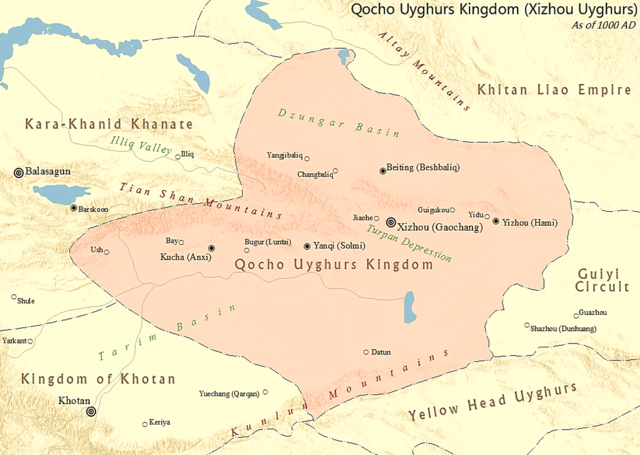
.jpg)
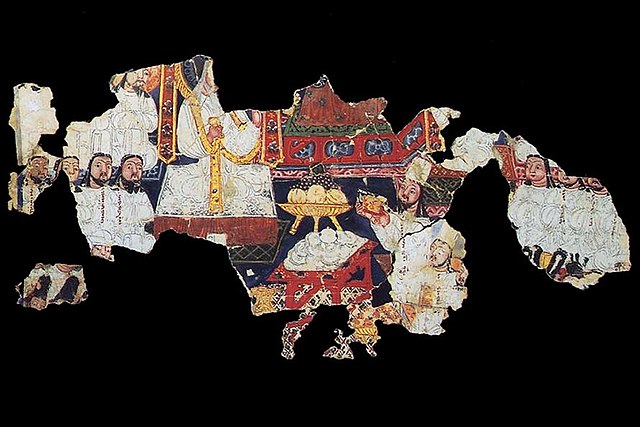

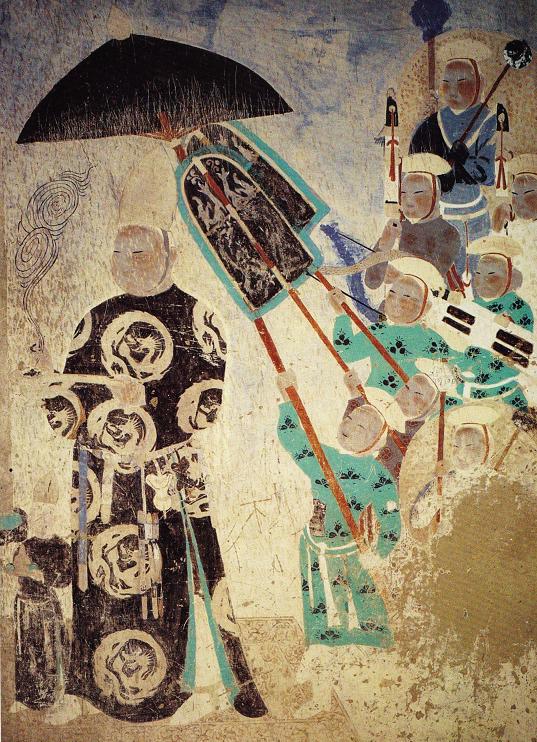
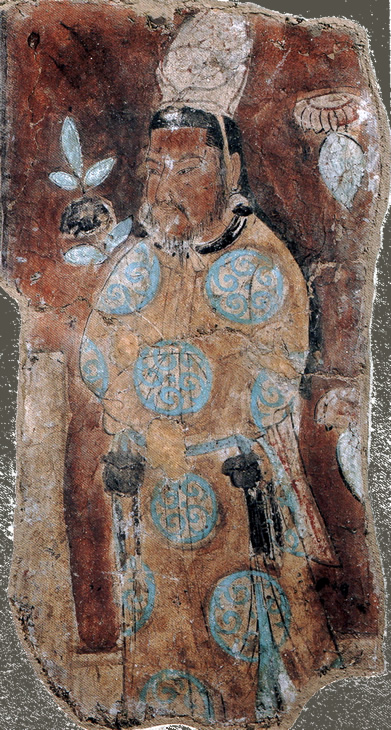
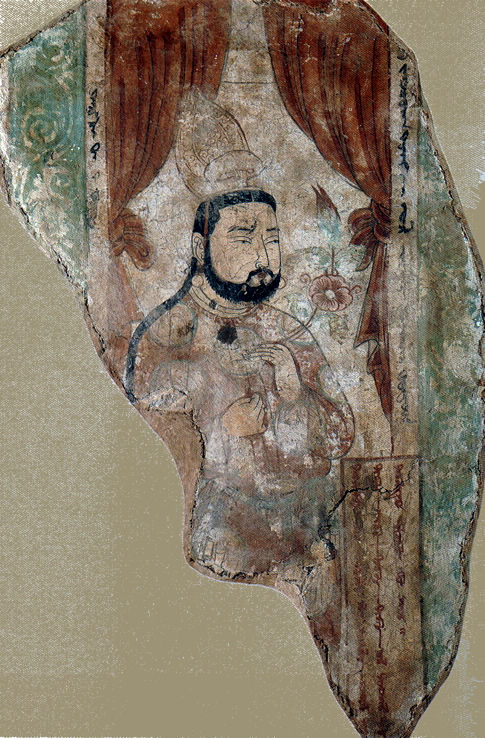
.jpg)
